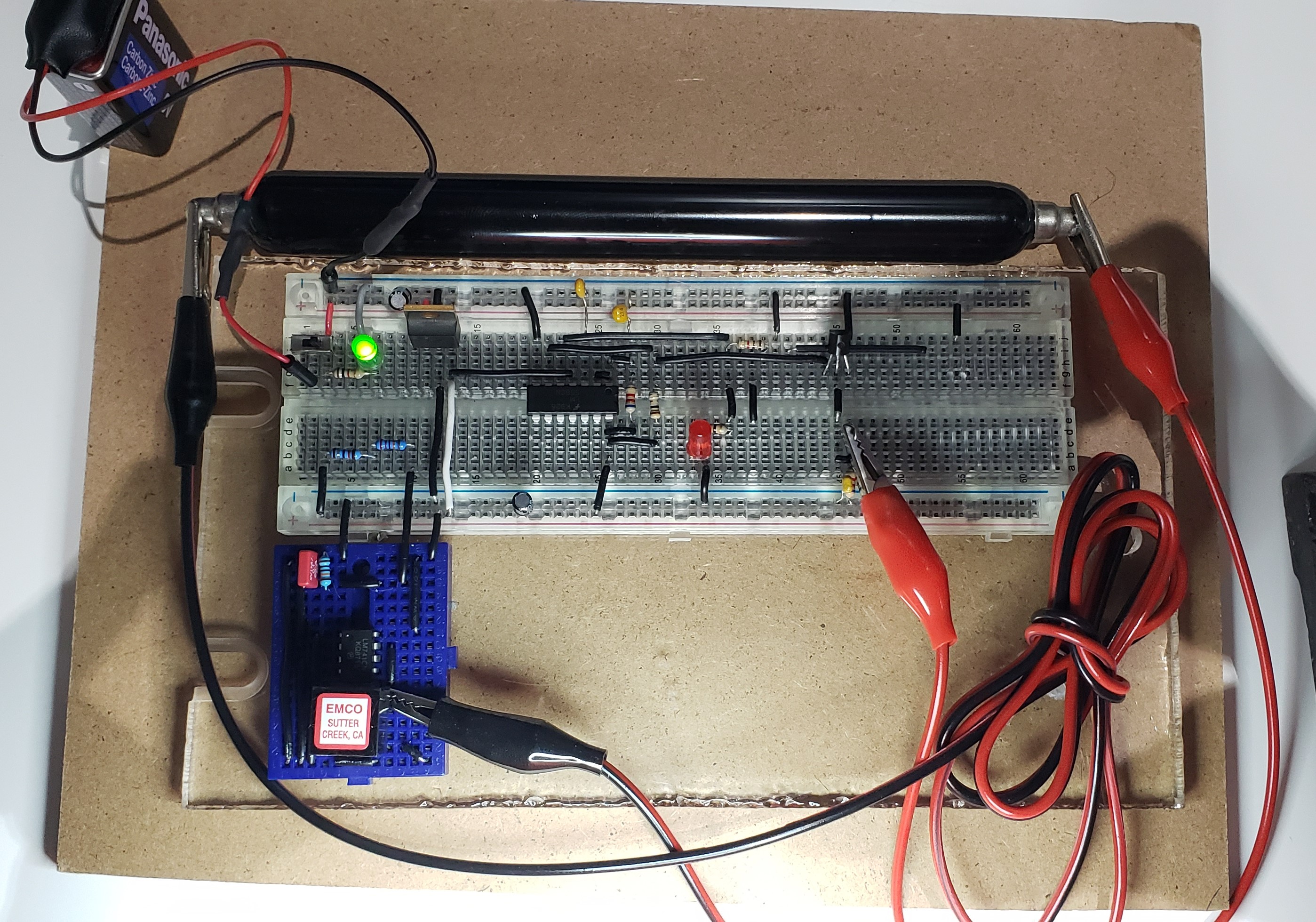Overview
The goal of this demonstration is to explain how a Geiger Counter works. This assumes that the students already have some prior knowledge of nuclear physics and radioactive decay. The intended audience is high school Physics students using the A-Levels curriculum. However, the level of background knowledge needed is not very complex. In addition to learning how a Geiger counter works, the students will learn about the basics of circuitry and breadboards.
This demonstration can also be used to explain the concept of background radiation and correct some common misconceptions about nuclear radiation. The tube I used in the counter has a sensitivity that can detect up to 80 counts per minute without any radioactive source present. These counts are due to background sources such as cosmic rays.
Design
I started building my Geiger counter based on this project by MIT OpenCourseWare. However, my counter is slightly scaled back, although with the same functionality.

In this construction, I used a J308 Geiger tube which could be purchased from here.
This is the circuit diagram of my counter.
The basic idea behind how a counter works is that we have a high voltage circuit with a broken wire passing through an inert gas at near-vacuum. When a particle ionizes that gas, the circuit is closed, and detection is made in the form of a flash on the LED in my case.
The main challenge with the construction is upping the voltage to at least 400 V. In my case. I used a DC-DC high voltage converter to convert 1.5 V to 450.
I also had to use a signal stretcher (LM555) to lengthen the pulse generated by a detection to something long enough to be observed by a human eye.
One area of possible improvement is connecting the detector to a microcontroller or counter instead of an LED, which could measure the rate of detections. Unfortunately, I could not do this due to time limitations, however, if interested, please contact me, and I can share the code that I have written for a TI-MSP430 Microcontroller.
Presentation
Slides
Click here to access the slides.
Video
This is a video of the gieger counter and an beta particle source.
Note how the detections (red LED) rate increases as we bring the source closer to the tube.